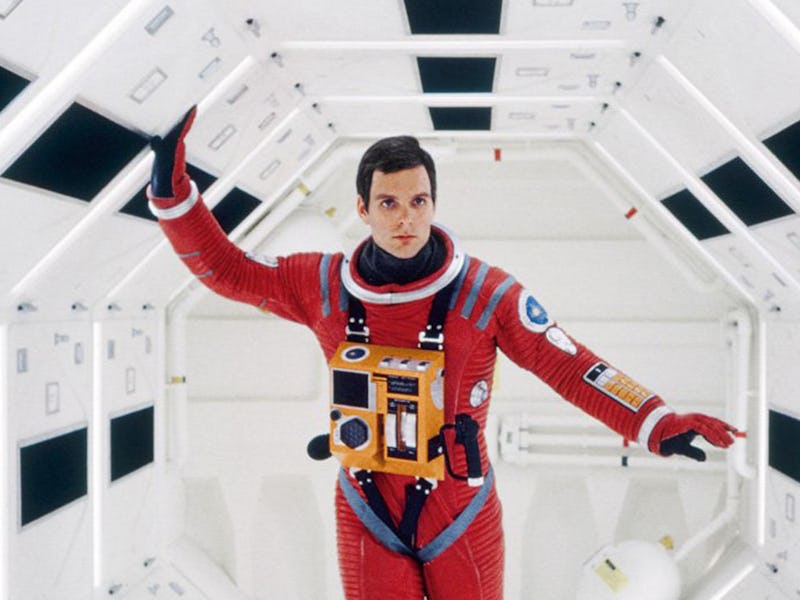How Pot-Smoking Youths Saved '2001: A Space Odyssey' 50 Years Ago
At first, the movie was a called a "catastrophe.' But then everybody got high.

For those who were alive fifty years ago, the most important sci-fi question in 1968 wasn’t: “Where were you when you saw Stanley Kubrick’s 2001: A Space Odyssey?” Instead, it was: “How high were you when you saw it?” On April 3, 1968, 2001 was released in cinemas around the world. But if your cannabis-smoking hippie progenitors hadn’t supported the movie, the stuffy critics of the time would have killed the movie.
Wednesday marks the 50th anniversary of the wide release of 2001: A Space Odyssey. These days, you’ll find plenty of pundits who will declare this movie not only ground-breaking for its special effects but also because metaphysically and philosophically few science fiction films have surpassed it. But in the early days of its release, 2001 was in trouble. In the book The Making of 2001: A Space Odyssey, journalist Jay Cocks describes the first press screening a “catastrophe.” Cocks himself was supposed to write a cover story for Time about the film in 1968. However, that story was canceled by the magazine due to “devastating” early reviews. So what happened? How did 2001 make a comeback?
The key to understanding how 2001 conquered its early bad buzz can be found in the famous tagline on the movie poster: “The Ultimate Trip.” MGM Publicist Mike Kaplan and Joanna Ney — unsung heroes of 2001 — started noticing that the audiences who were responding to the movie were almost always on the younger side. And most importantly, during the trippy “Star Gate sequence,” people seemed to be getting high. Thus, the movie was sold to the Sixties counterculture youth exactly the same way. “The Ultimate Trip,” meant a trip through time and space, but also a trip in your mind. And, as Cock writes: “[I]f you weren’t hip enough to take it, you weren’t worth being taken seriously.”
Recognizing that young people could be the target audience for financially successful and critically acclaimed science fiction movies was prescient on Ney and Kaplan’s part. Most of 2001’s best reviews came from low-circulation independent papers, which helped to get the word out to the people who actually cared about the movie. This strategy would mirror what George Lucas’s publicity team, led by Charles Lippincott, did nearly a decade later to promote the original Star Wars: They focused their ad campaigns on comic-cons and college radio stations.
Though 2001 seemed like it was going to be a critical and financial failure, by the end of 1968, the film was getting better reviews and would go on to gross $56 million at the box office. Thankfully, half a century ago, a science fiction film could have more than one weekend to prove its worth in box office returns.
At one point, John Lennon claimed he watched 2001 “every week.” So if you find yourself watching 2001: A Space Odyssey today — in honor of its 50th birthday — and you don’t think it’s very good, ask yourself an important question: Are you cool? Because chances are, if you like this movie, you’re very cool. - 2001: A Space Odyssey is available to rent on Amazon.